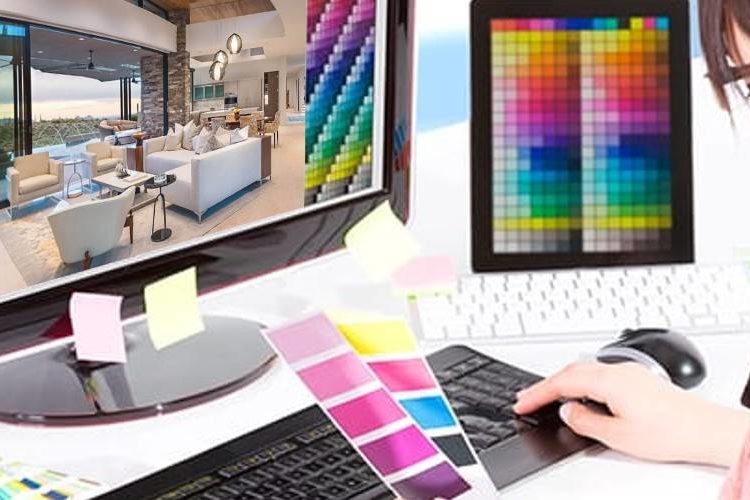The colors on your printed project will never precisely match your online proof, and here’s why:
They can’t! (It’s literally impossible)
You’re looking at your proof and it looks beautiful, but…
It won’t look exactly like that when it’s printed. Oh, it will still be gorgeous, but the colors won’t perfectly match what you’re seeing on your computer monitor. There are two very important reasons for that:
- Electronic displays (computer monitor, cellphone or TV) create every single color by using only Red, Green, and Blue (RGB). Those three colors literally make up every other color you’ve ever seen on electronic devices. Yellows, purples, grays, pinks, and browns are all made using only red, green, and blue. And the colors are ultra-vibrant because the display is backlit using fluorescent or LED lighting.
- Printing, on the other hand, doesn’t use red, green, or blue colored inks. Instead, they use Cyan, Magenta, Yellow, and Black (CMYK). And their inks are not backlit like your monitor. Rather, they reflect whatever existing light is available, meaning they’ll never be as bright as a monitor. Nonetheless, the brighter the available light, the more vibrant the colors will appear. That’s why colors on printed pieces are typically their brightest in daylight.
So what’s the problem??
Look at the graphic to the right (or above). See how much more vibrant the RGB colors are compared to those exact same colors using CMYK?
THAT’S where the problem comes in!!
We’ve all grown so accustomed to viewing colors on our TVs, computers, and phones, that those colors have become our new normal. When you see blue on your monitor, it’s literally 100% blue. But when a printer tries to print the same color blue, it must be a mix of cyan, a little magenta, and black. As a result, the color blue on your flyer or brochure will never actually be blue (as there’s no blue ink in it at all).
But wait, we’ve all seen product packaging that has a very blue color, right?
If you’re Kellogg and want Frosted Flakes in a specific blue-colored box, then the printer will mix up a batch of custom blue ink and add it as a 5th color to the existing CMYK, and charge Kellogg for the extra color. Remember that Kellogg is producing millions of cereal boxes every month, so paying for that is no problem.
That’s also why you’ll often see multiple little color swatches on the inside flaps of product packaging. Those are usually the additional colors added to the printing press, over and above the standard CMYK.
Here’s a real-world example to show you the difference!
The above comparison perfectly illustrates what we’re talking about. Notice how the blue sky in the photo on the left is extremely blue, but on the printed version it seems somewhat muted?
Also, did you notice that the back of the flyer’s colors barely changed at all? That’s because the back consists of mainly neutral colors, which don’t change much.
The most notable shift in colors will be the reds, greens, and blues (not surprisingly). Remember that there are no ink colors that correspond to those colors. So red, for example, is actually a mixture of cyan, magenta, and yellow… with a little bit of black to determine the shade of red. Reds will often appear slightly orange when printed, especially when the yellow or magenta isn’t properly calibrated.
We’ll usually avoid that by adding more black to the mix, but that also causes reds to appear slightly darker on the printed piece versus the color you saw on your monitor. Remember that on your monitor, red is 100% red. But in printing, there is no red, and instead you have to blend 4 other colors to make it.
What’s the solution?
Well, the answer to that is… there really isn’t one.
The two technologies are what they are. Display devices use different colors than printers are even capable of producing. They refer to these as color gamuts, meaning the TOTAL range of colors that are possible. RGB colors have a MUCH, MUCH wider color gamut than CMYK, making it literally impossible for thousands upon thousands of RGB colors to EVER be reproduced using CMYK (no matter how many times you try to blend them properly). Many colors are simply outside the CMYK color range.
You also have to factor in that everyone calibrates their monitors differently. Maybe you like yours ultra-bright? Ours are not. We’ve calibrated our monitors to display (as closely as possible) what the actual colors will be when printed, but our monitors are likely much darker than you’re used to.
You can also factor in the various brands of printing presses, and whether your project is digitally printed with toner, or offset printed with ink, or even how often the individual print company calibrates their machines. All of those things combine to determine what your final printed pieces will look like.
Our best advice:
There is no way to 100% accurately preview the proof on your monitor. You will see differences when you receive the printed pieces. But that’s been the case ever since we started sending digital proofs via email instead of printing a hard copy first.
There are still many times that a company is getting ready to print 3 million postcards and they don’t want any surprises. So they pay to print a hard copy on the huge offset press so they can see the actual end result.
But it never makes financial sense to do that when printing 100 brochures or 1,000 business cards. And the colors aren’t typically drastically different… just a “bit” different.
If you have any questions about all of this, give us a call!

